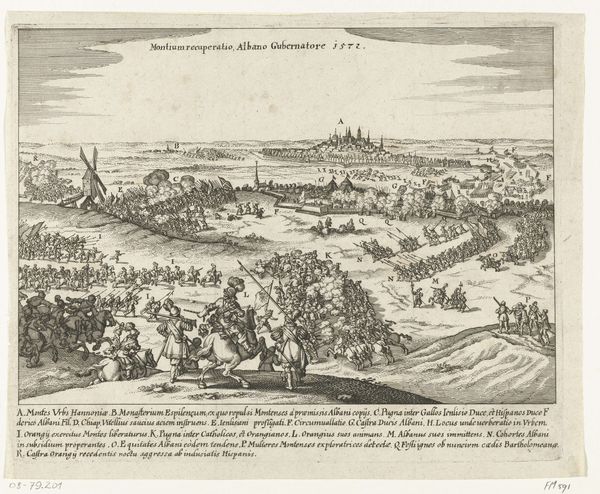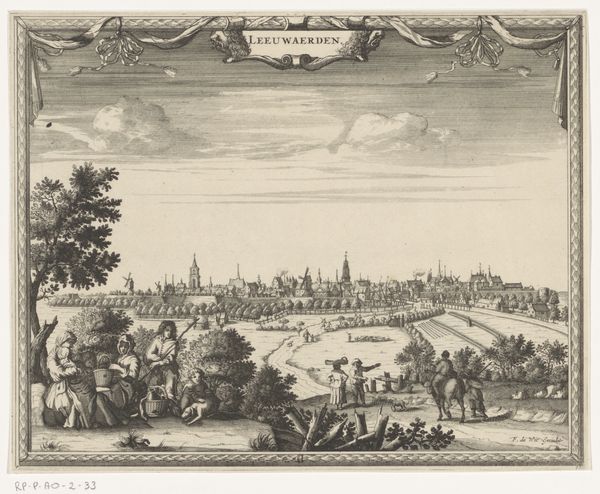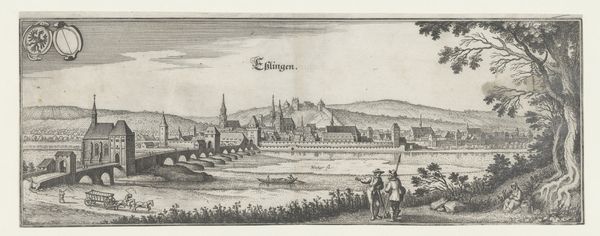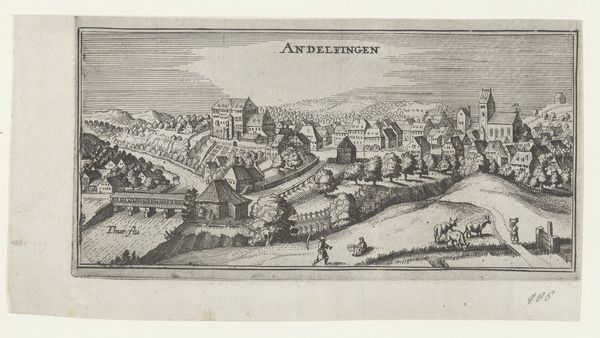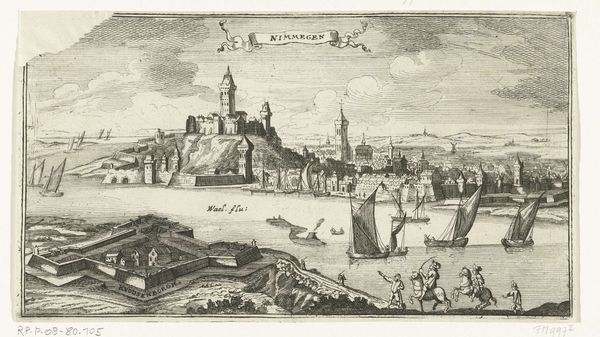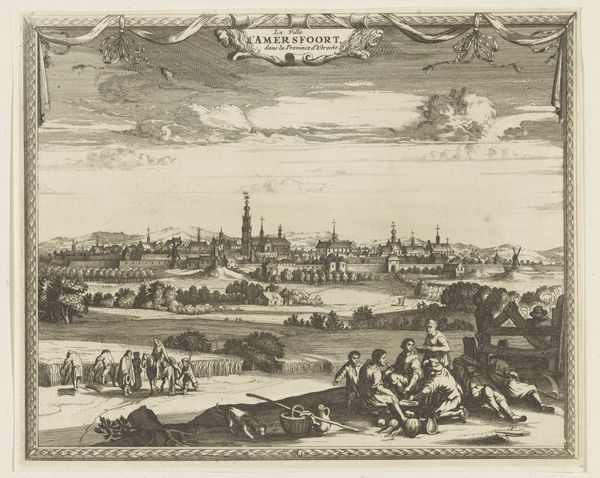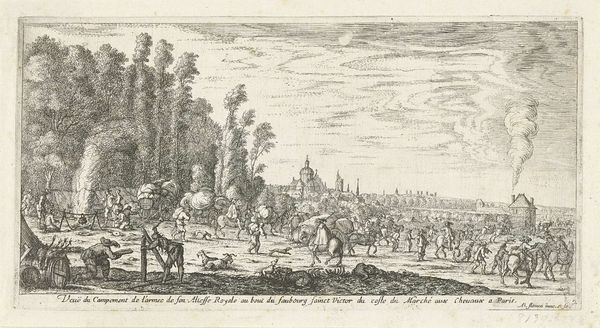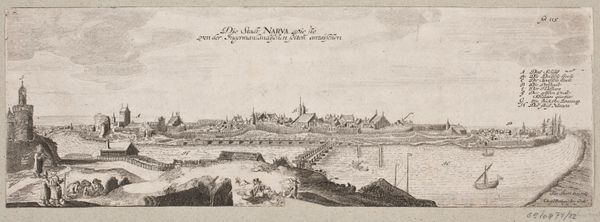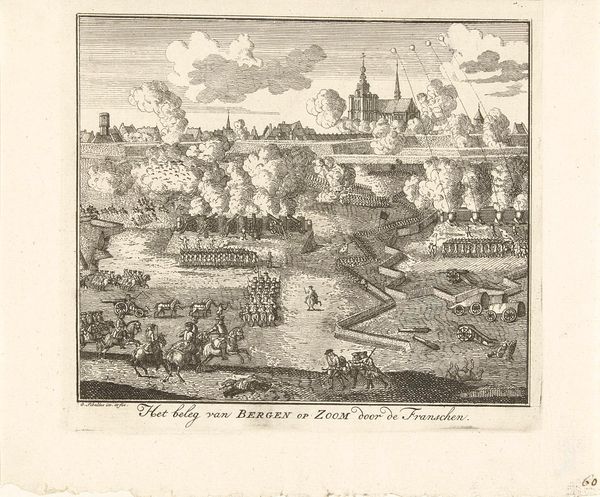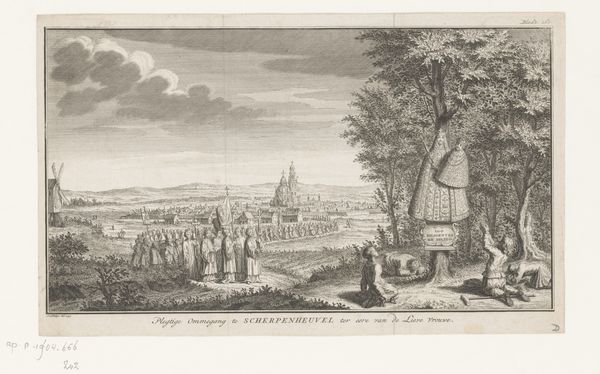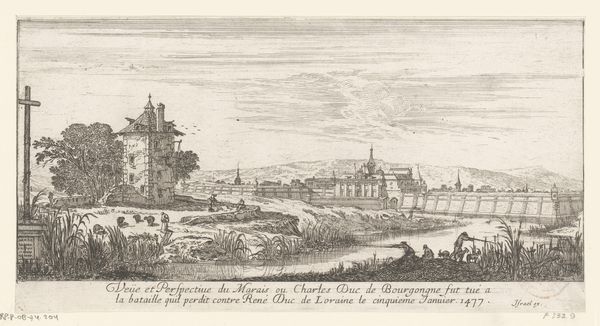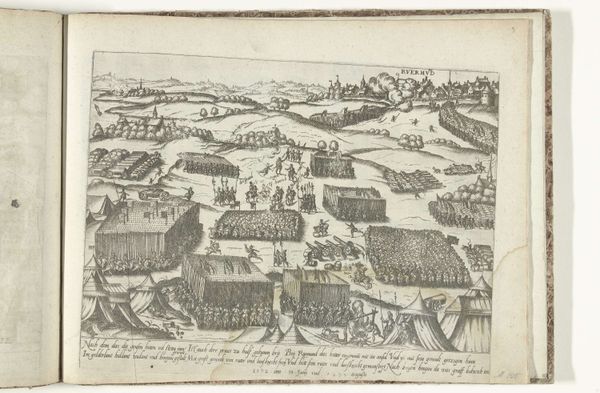
print, engraving
#
baroque
# print
#
old engraving style
#
landscape
#
cityscape
#
engraving
Dimensions: height 102 mm, width 159 mm
Copyright: Rijks Museum: Open Domain
Editor: Here we have Matthäus Merian's "Gezicht op Brackenheim," an engraving from the mid-17th century. It’s a cityscape, meticulously detailed. The walls surrounding the town strike me; they create a sense of protection but also separation. What significance do you see in this portrayal? Curator: The town walls certainly speak of a need for defense, a visual symbol common in that era. But look closer at the figures outside those walls, tilling the fields, bearing their goods. Don’t they suggest something more? Editor: I see what you mean. They’re going about their daily lives right outside the fortifications. Almost a contrast between labor and protection? Curator: Precisely! These people and the walls act as an image that carries not only cultural but also psychological weight. The town becomes not merely a place, but an idea, a vessel carrying cultural identity and the burdens of that time. The dog in the crest too suggests a fealty, allegiance. Does that change how you see it? Editor: It does! I hadn't considered the emblem's symbolism. It's like the artist is layering meanings—security, loyalty, maybe even aspiration, all coexisting. Thank you. Curator: These visual elements function almost as talismans, offering glimpses into the anxieties and affirmations of a culture clinging to memory. Now when you look at similar images, you can explore how historical continuity lives through art.
Comments
No comments
Be the first to comment and join the conversation on the ultimate creative platform.
